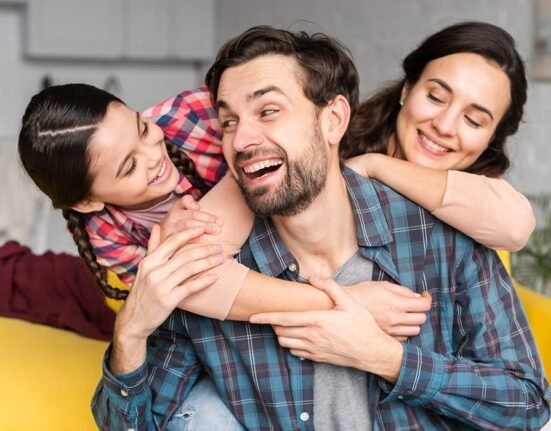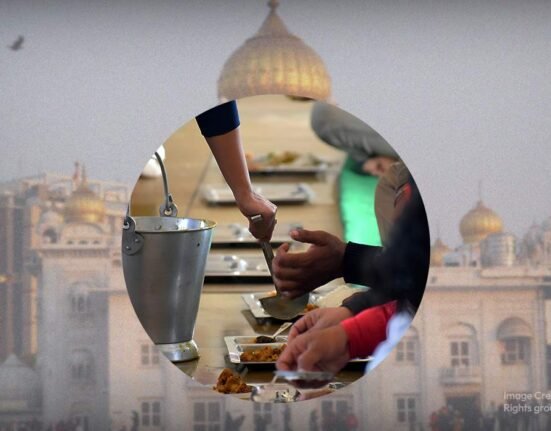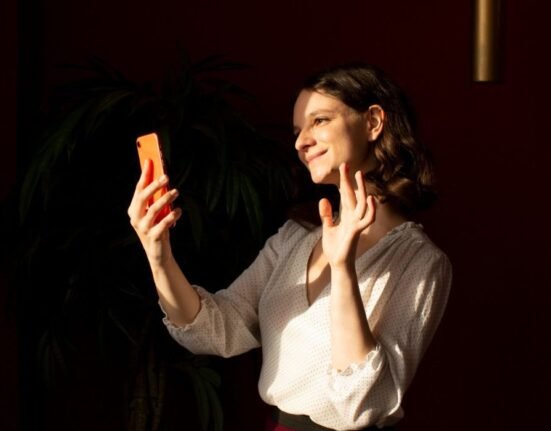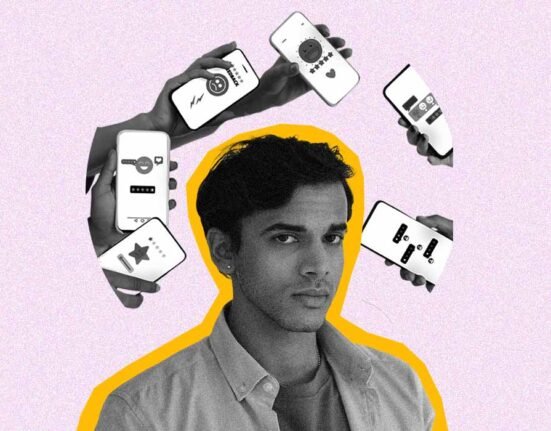The world on screen is known for its glitz, glamour and fame. With its capacity to influence the impressionable minds of viewers across the globe, it also carries the burden of shaping perceptions, setting trends and reinforcing social norms. The impact of a simple story written to entertain the masses can subtly influence cognition and attitudes, which often goes unnoticed. Similarly is the villainisation of the Muslim population on screen often being cast as the antagonist, miscreant, outlaw or even criminal.
Stereotypes follow every culture, but only a few remain so heavily reinforced by media and film. The portrayal of the Muslim community has been heavily stereotyped in cinema, leading to real-world consequences. The following article aims to explore the psychological foundations behind this stereotype and the broader impact on the community.
Read More: The Psychology of Stereotypes
What is a Stereotype?
Stereotypes are “fixed, over-generalised beliefs about a particular group or class of people,” according to social psychology (McLeod, 2023). It is the result of cognitive traits called heuristics that enable quick information processing. On the other hand, it also makes false assumptions about people based on their identification or group membership. It may also be considered a social categorisation mechanism that fosters the growth of prejudice and attitudes (McLeod, 2023). Stereotypes can be neutral, good, or negative, but they are frequently used to defend actions or viewpoints that support discrimination and prejudice.
Common types of stereotypes include those based on gender, race, sexual identity, disability, social class, nationality, religion and more. They often revolve around an individual’s identity and the groups they belong to. Screens often stereotype individuals from the Muslim community by labelling them as harbingers of terror.
Read More: Gender Stereotypes in Advertisements and Their Impact on Mental Health
The Roots of Sterotyping Muslims in the Media

The portrayal of Muslims in both Hollywood and Bollywood cinema has significantly evolved over the decades and often even reflects the challenging social and political landscape of the nations through its depiction. Studies, which aim to examine the portrayal of Muslims on screen, suggest that the stereotypes that follow the Muslim community are not only for entertainment, but hold up a mirror for societies, attitudes, ideologies, and anxieties regarding the community (Najar, 2025).
B. Qumsiyeh (n.d.), in his report titled “100 Years of Anti-Arab and Anti-Muslim Sterotyping”, suggested that the portrayal of the Arab and Muslim community on screen has been reduced to any three of the following: bombers, belly dancers or billionaires. This depiction of the community reduces their identity, portraying men as terrorists or wealthy businessmen, and women as sexual objects. These representations in Hollywood caught on to Indian cinema as well. Islam (2007) suggests that post the partition and independence of India, most films with muslim characters depicted them as the “other” community as a direct result of the communal tensions prevailing in the country. The “Us vs Them” ideology, which commonly resonates with stereotyping behaviour, was prevalent even on screen.
However, the stereotyping behaviour that identified Muslims as the antagonists of cinema almost became a norm post the tragedy of 9-11 (Khalil, 2019). Negative stereotypes revolving around the Muslim community, particularly those that suggested that nations were in peril because of individuals who belong to such communities, intensified after the tragedy (Najar, 2025). The common tropes that followed the muslim community in cinema were:
- Individuals with Muslim identities are often terrorists or criminals
- Integrating religious identity with anti-national activities
- Attempts to stop elaborate terror attacks planned by members of the Muslim community
- Oppression of women
- Religious intolerance
- Arabic clothing
- Overexaggerated accents
Read More: How Television Shapes Stereotypes: The Impact of Media Representation on Society and Psychology
Impact on Audience
Especially in India, Bollywood and cinema are a powerful force that systematically shapes public opinions and attitudes. The representation of the Muslim community on screen has played a very crucial role in instigating Islamophobia and increasing prejudice towards the community. The constant portrayal of Muslim characters as terrorist threats to the nation, criminals, oppressors, and more has shaped society’s perception of the community.

George Gerbner’s Media Cultivation Theory suggests that long-term exposure to media shapes how consumers of said media perceive the world around them (Perera, 2023). This theory suggests that the content which individuals consume over the long term can significantly impact the cognitive processes used in daily life, which can also relate to the encouragement of stereotypes and discrimination. Essentially, cinema and television become a large part of the social cultural system, which directly impacts human cognition.
Read More: Impact of Media Violence on Mental Health
Impact on the Muslim Community
These stereotypes may seem like matters of entertainment for those who create them and for members of other communities who act as audiences, but for members of the Muslim community, they can portray a very significant burden. The constant portrayal as antagonists and villains creates a sense of prejudice amongst the audience, which the members of the Muslim community have to tackle in daily life. The thoughts and attitudes influenced by the media have significant real-life implications.
The portrayal of terror always being at the hands of members of the Muslim community fuels Islamophobia and discrimination against the community. The stigmatisation on screen can lead to exclusion, suspicion, microaggressions, and even physical violence against members of the Muslim community. Even if cinema only depicts a few members of the community as a threat, the constant depiction and its intensity normalise a degree of prejudice towards the community and all of its members.
The stigma faced by individuals who visibly display their identity as a part of the Muslim community is often worse. Especially for Muslim women who wear the hijab, the prejudice faced is for both their religion and gender. People even profile men as criminals or perpetrators based on their dress. Airports and other high-security areas often subject individuals from the Muslim community, identified by their features or attire, to racial profiling and hours of questioning (Abualnaja & Nayer, 2019).
Conclusion
People commonly believe that screen life mimics real life, but research also suggests that screen life significantly impacts real life. The integrative relationship between cinema and reality makes movies, television and shows a very powerful force, which systematically shapes how members of society perceive the world and act in it. The repeated depiction of Muslims as perpetrators of crime and outlaws has distorted public perception of the community, leading to a lasting psychological impact on the audience. Simultaneously, it also places a great social burden on the Muslim community, allowing Islamophobia to thrive and normalising prejudice against Muslims. Stories on screen matter and have perpetuated cycles of discrimination against the Muslim community. This bleak reality calls for a change in the landscape of media, which does not villainise membership of the Muslim community and encourages Islamophobia.
FAQs
1. Have filmmakers always portrayed Muslims as terrorists on screen?
Since the representation of the Muslim community in media, there has been a significant portrayal of Muslims as terrorists on screen; however, this stereotype was heavily subscribed to by filmmakers, especially after the tragedy of September 11th. Other than that, Muslims have also been stereotyped as perpetrators of terror as a result of the communal violence and tensions in the country’s political scenario.
2. Despite facing criticism, why do filmmakers continue to fuel the Muslim terrorist stereotype?
Members of the Muslim community and scholars from around the globe have constantly criticised filmmakers for using the harmful stereotype of Muslim terrorists on multiple occasions. Yet filmmakers continue to capitalise on this stereotype, mostly because it taps into existing cognitive schemes and fears. By using such a trivial stereotype, filmmakers can overcome the need for character development and background, as the audience immediately connects criminal behaviour with their religious identity instead.
3. How can filmmakers tackle the misrepresentation of the Muslim community on camera?
We can tackle the misrepresentation of the Muslim community only when its members. Those who understand and appreciate it display their art. Filmmakers can tackle the misrepresentation of the Muslim community by rejecting common stereotypes and opting for authentic, inclusive representation.
4. Are there pieces of media that aim to address Islamophobia?
Despite the common stereotype of Muslims as terrorists in a great number of pieces of media. Some films challenge the stereotypes and offer authentic representation. Most of these films critically examine the stereotype and discourage Islamophobia with the main aim of humanising Muslim characters.
References +
Abualnaja, N., & Nayer, G. (2019). Do Muslim Americans Support Racial Profiling at Airports? Islamophobia Studies Journal, 5(1). https://doi.org/10.13169/islastudj.5.1.0011
B. Qumsiyeh, M. (n.d.). 100 years of anti-Arab and anti-Muslim stereotyping. The Prism. https://www.ibiblio.org/prism/jan98/anti_arab.html
Islam, M. (2007). Imagining Indian Muslims: Looking through the Lens of Bollywood Cinema. Indian Journal of Human Development, 1(2), 403–422. https://doi.org/10.1177/0973703020070208
Khalil, A. (2019, March 2). But can you play a terrorist? – Los Angeles Times. Los Angeles Times. https://www.latimes.com/archives/la-xpm-2007-oct-04-et-arabactors4-story.html
McLeod, S., PhD. (2023). Stereotypes In Psychology: Definition & Examples. Simply Psychology. https://www.simplypsychology.org/katz-braly.html
Najar, M. A. (2025). Representation of Indian Muslims in Bollywood Cinema: A Scholarly Review. Journal of Transcultural Communication. https://doi.org/10.1515/jtc-2024-0010
Perera, A. (2023). Cultivation Theory In Media. Simply Psychology. https://www.simplypsychology.org/cultivation-theory.html













Leave feedback about this